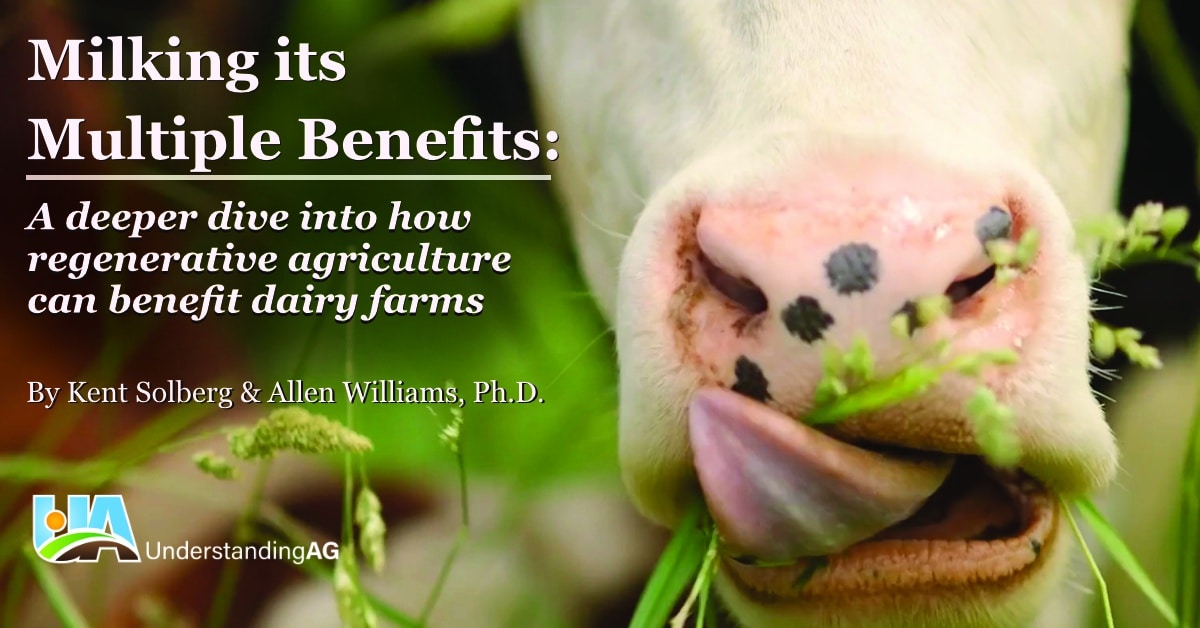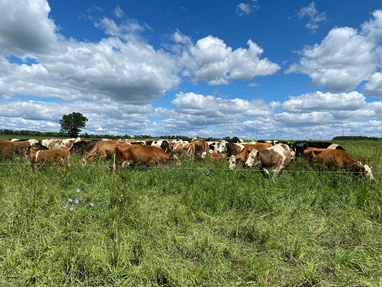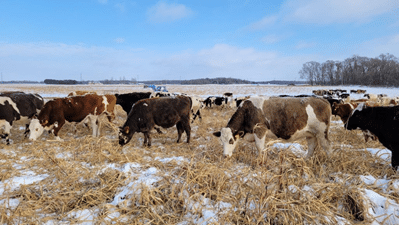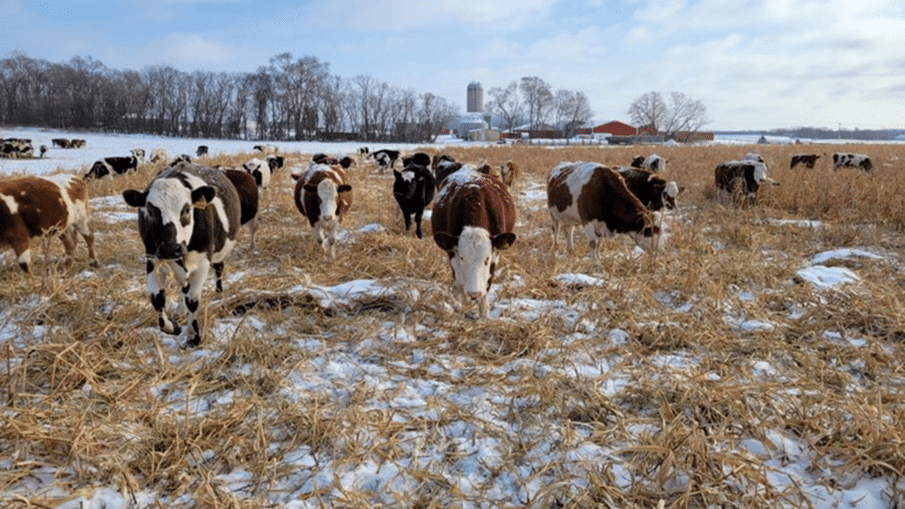
In our previous article, we provided an overview list of the many potential benefits dairy farms are observing as they move into regenerative agriculture. Dairy farms are uniquely suited to the principles of adaptive management because they have multiple livestock classes that can utilize a variety of feedstuffs. This provides opportunities for greater plant diversity in and within the crop rotation. Most dairies have both annual and perennial crops—and most dairies have a ready supply of livestock, some that can be readily integrated into cropping systems.
Livestock Integration
As discussed many times on this blog site, at our Soil Health Academies and in our webinars, livestock integration at the appropriate time and density is the force multiplier that allows farms the ability to exponentially advance soil health, especially when compared to farms that do not. The data demonstrate that the integration of livestock into a cropping system accelerates and amplifies restoration of soil health. This is best accomplished through adaptive grazing of diverse plant stands. By diverse, we mean representation of at least three species each of grasses, legumes and forbs (broad leaves) within that forage stand. This is applying the soil health principle of increasing diversity.

Forage Diversity
Forage diversity stimulates a broader suite of soil biology than monoculture crops. Soil biology with a broad array of functional groups can access a greater degree of the nutrients inherent within the soil profile, making those nutrients available to the plant and grazing animals. Each plant has its own unique array of phytonutrients. As Fred Provenza and others have found, phytonutrients play a large role in animal health. A combination of increased plant access to nutrients and phytochemicals creates nutrient-dense feedstuffs that provide greater livestock nutrition. Grazing animals that have access to the broadest array of phytonutrients in biologically robust soil and are allowed to self-select what they need on any given day, tend to exhibit the greatest degree of health. Better health leads to cow longevity and better milk components. Cow longevity equates to reduced replacement needs and better conception rates. Better conception rates reduce breeding costs.
Most dairy farms feed a relatively low-diversity diet to their animals in the form of a TMR. This is composed of commodity feedstuffs that were grown in a monoculture system in soils that were previously degraded. There are two items of importance here: 1) degraded soils impart lower phytonutrient density into whatever crop is being grown, and 2) monoculture crops will typically have lower phytonutrient density compared to crops that are grown in diverse mixes. For example, a diverse annual mix that is then grazed or harvested for silage will be significantly more phytonutrient diverse and dense than any monoculture crop. Growing plants together stimulates significantly greater soil microbial activity and nutrient cycling, as well as a better performing water cycle.
Economic Benefits
As we discussed in the previous post, there are substantial economic advantages derived from integrating heifers into a regenerative system. This leads to a positive epigenetic effect on soils, plants, animals and ultimately humans, equating to a better bottom line. Integrating heifers and dry cows into crop systems turns them into soil health building tools, not simply a production expense. Our management does not need to be "all or nothing." The best management is adaptable. If we have heifer or dry cow facilities, we can enjoy the benefits of both systems while maximizing the potential benefits. Under adaptive management, we can graze when and where appropriate, and utilize “brick and mortar” infrastructure when appropriate (extreme weather, mud). Many facilities were built to provide shelter during weather extremes. None of us have extreme weather every day.
We have found that most livestock prefer to be out and about during most days. Larry Tranel at Iowa State University has found that a “hybrid” of grazing and facility use can be very profitable; grazing most days and reserving roofed facilities for inclement weather. We have found that animals only need to be on any given acre for one day or less per year at appropriate stock density (stock density = pounds of livestock per acre) to accrue soil health and epigenetic benefits. Seeded blends of complex annuals provide the ability to graze almost year-around, even in a northern climate.
Portable Cows
Dry cows and heifers—particularly heifers—are portable. Portable loading facilities using design principles developed by Bud Williams (the “Bud Box”) combined with good stockmanship, and the quality trailers found on most farms today, make moving animals, even to distant fields, feasible. Once animals are accustomed to semi-permanent and portable energized fencing, it opens up numerous options. Many, including us, have successfully grazed thousands of acres utilizing only a single strand of energized wire. This is not a recommendation, but simply an example of what is possible for skilled and committed practitioners. Numerous options to water animals are also available. The type of watering system will be dictated by context, and a combination or hybrid of water delivery methods can often provide the most cost-effective results.
Pertinent Example
Derek is a dairy farmer we have worked with in central Minnesota. Utilizing adaptive grazing on complex seeded annuals, he has recently observed a cost-per-day feeding and maintaining dry cows and heifers at $0.56/head/day. This cost includes land rent, seed, labor and equipment. He knows of neighboring farms spending just under $4/head/day. In addition to feeding his animals, he is spreading manure, stimulating soil biology, checking cattle, keeping hooves in good shape, preparing the soil for the subsequent crop and building epigenetics in that field and within his cow herd that will benefit his farm for years to come. He is doing this in November and December. He has access to a building for his animals, but they have been doing fine in an outdoor setting into early winter.

Additionally, Derek is experiencing cost savings by not having to clean feeding pens; lowered manure management costs; healthier animals that rarely experience what we consider to be “common” problems; improved reproductive performance; and greater longevity as expressed in the number of lifetime lactations. He can spend far more time actually observing his cattle and learning each animal. This added observation is crucial to making better informed selection and culling decisions.

Summary
Adaptively integrating cattle into the cropping systems of a dairy farm can deliver a host of positive compounding effects, bolstering the bottom line in a time of input cost inflation. Understanding Ag and the Soil Health Academy can help a farm capture the advantages of what regenerative agriculture can offer. For those who want to learn more, check out our recently released Regen Ag Online: Adaptive Grazing series.
